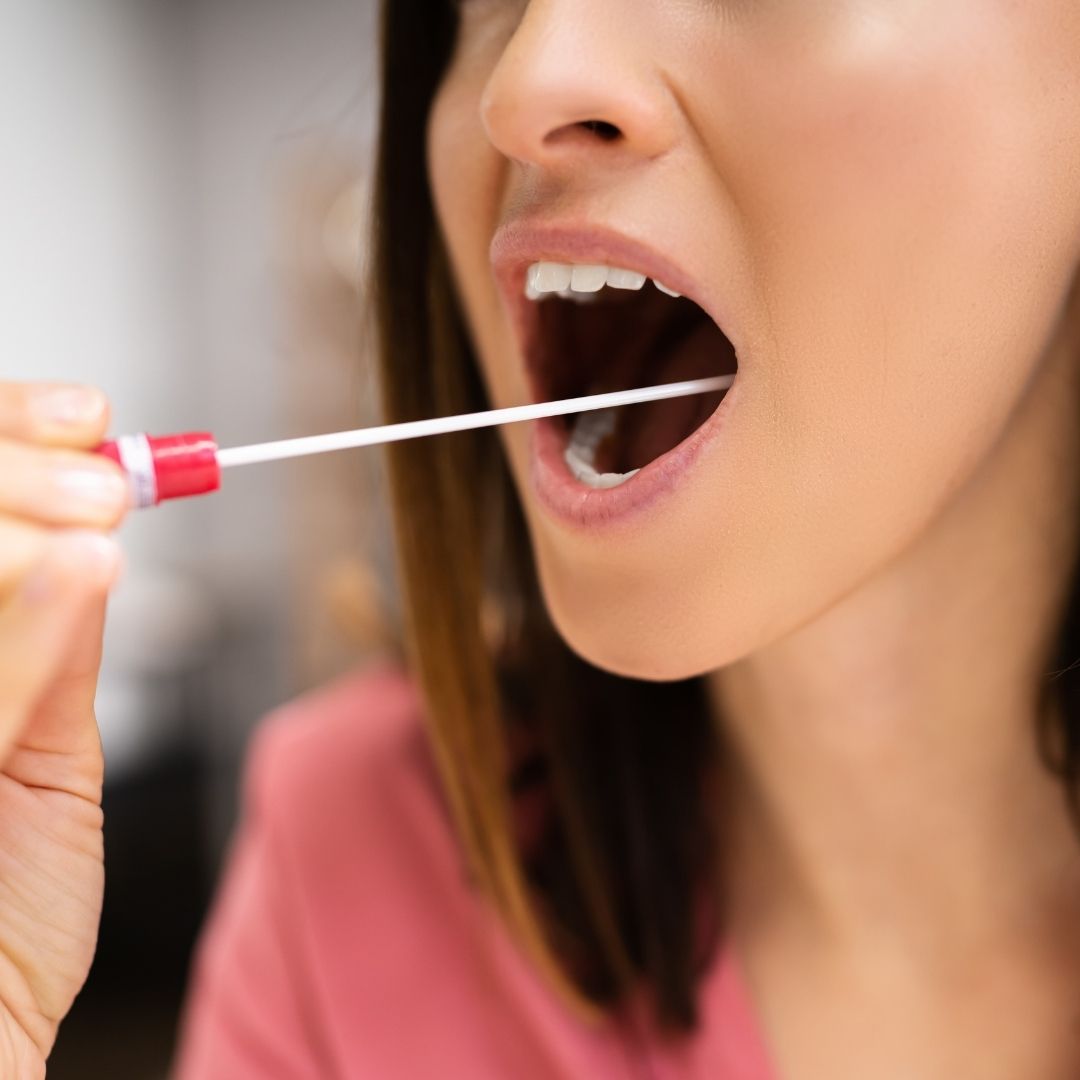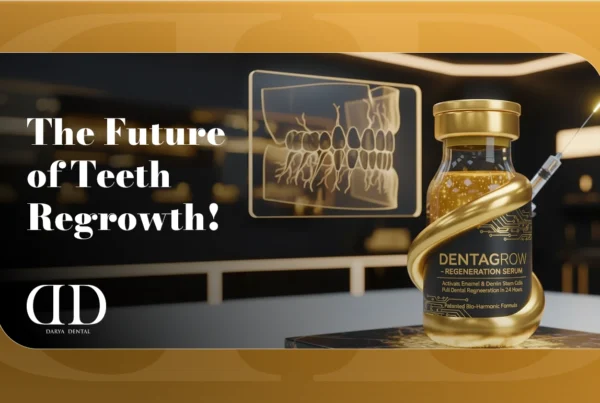
Saliva testing, once a niche diagnostic tool, has emerged as a powerful component of modern dentistry, offering insights into oral and systemic health. Saliva, often called the “mirror of the body,” contains biomarkers that reflect conditions ranging from dental diseases to systemic disorders. This non-invasive, cost-effective method is transforming how dentists diagnose, monitor, and prevent health issues. This article explores the science behind saliva testing, its applications in dentistry, and its impact on patient care, highlighting why it’s becoming a cornerstone of personalized dental practice.
The Science of Saliva Testing
Saliva is a complex fluid composed of water, enzymes, proteins, electrolytes, and hormones, produced primarily by the salivary glands. It plays a critical role in oral health by lubricating tissues, aiding digestion, neutralizing acids, and fighting bacteria. Beyond these functions, saliva contains biomarkers—measurable substances like DNA, RNA, proteins, or microbes—that provide clues about health status.
Saliva testing involves collecting a small sample, typically by spitting into a tube or using a swab, and analyzing it for specific biomarkers. Advances in technology, such as polymerase chain reaction (PCR) and enzyme-linked immunosorbent assays (ELISA), allow for precise detection of these markers. Unlike blood tests, saliva testing is non-invasive, painless, and easily repeatable, making it ideal for dental settings. A 2021 study in Journal of Dental Research noted that saliva diagnostics have a sensitivity and specificity comparable to blood tests for certain conditions, underscoring their reliability.
Applications of Saliva Testing in Dentistry
Saliva testing has diverse applications in modern dentistry, from diagnosing oral diseases to assessing systemic health risks. Below are the key ways it’s used.
1. Detecting Dental Caries Risk
Dental caries (cavities) result from bacterial activity, particularly from Streptococcus mutans and Lactobacillus, which produce acids that erode enamel. Saliva testing can measure levels of these bacteria, identifying patients at high risk for cavities. It also assesses saliva’s buffering capacity—its ability to neutralize acids—and flow rate, as low saliva production increases caries risk. A 2020 study in Caries Research found that patients with low salivary buffering capacity were 3 times more likely to develop cavities. Dentists use these results to recommend preventive measures like fluoride treatments or dietary changes.
2. Diagnosing Periodontal Disease
Periodontal disease, including gingivitis and periodontitis, is linked to specific bacteria and inflammatory markers in saliva. Tests can detect pathogens like Porphyromonas gingivalis or measure proteins like interleukin-1β, which indicate gum inflammation. Early detection through saliva testing allows dentists to intervene before bone loss occurs. According to the CDC, 47% of adults over 30 have some form of periodontal disease, and saliva tests help identify those needing targeted treatments like scaling or antibiotics.
3. Screening for Oral Cancer
Oral cancer, affecting over 50,000 Americans annually per the Oral Cancer Foundation, is often diagnosed late, reducing survival rates. Saliva testing can detect biomarkers like specific proteins (e.g., CD44) or genetic mutations associated with oral squamous cell carcinoma. A 2019 study in Oral Oncology reported that salivary biomarkers identified oral cancer with 90% accuracy in early stages. Routine saliva tests during dental checkups can facilitate early detection, improving outcomes.
4. Monitoring Systemic Health
Saliva reflects systemic conditions, making it a valuable diagnostic tool beyond oral health. Tests can detect:
-
Diabetes: Elevated glucose levels in saliva correlate with blood glucose, aiding in diabetes screening. A 2022 study in Diabetes Care found salivary glucose testing 85% accurate for identifying prediabetes.
-
Hormonal Imbalances: Saliva measures hormones like cortisol or estrogen, which can affect oral tissues (e.g., gum inflammation during pregnancy).
-
Cardiovascular Risk: Inflammatory markers in saliva, such as C-reactive protein, are linked to heart disease risk.
-
Viral Infections: Saliva tests can identify viruses like HPV, associated with oral cancers, or SARS-CoV-2, as seen during the COVID-19 pandemic.
Dentists may collaborate with physicians to interpret these results, ensuring comprehensive care.
5. Assessing Dry Mouth (Xerostomia)
Dry mouth, caused by reduced saliva production, increases the risk of cavities and gum disease. Saliva testing measures flow rate and composition, identifying causes like medications, autoimmune diseases (e.g., Sjögren’s syndrome), or radiation therapy. A 2018 study in Journal of Oral Pathology & Medicine noted that low saliva flow (below 0.7 mL/min) significantly increased oral disease risk. Dentists can recommend saliva stimulants or hydration strategies based on test results.
6. Personalized Treatment Planning
Saliva testing enables precision dentistry by tailoring treatments to individual needs. For example, patients with high bacterial loads may receive targeted antimicrobial rinses, while those with low buffering capacity might benefit from fluoride varnishes. This personalized approach improves outcomes and reduces unnecessary interventions.
Benefits of Saliva Testing
Saliva testing offers several advantages over traditional diagnostics:
-
Non-Invasive: No needles or discomfort, making it ideal for anxious patients or children.
-
Cost-Effective: Tests are relatively inexpensive compared to blood work or imaging, with costs ranging from $10–$100 depending on the analysis.
-
Quick and Convenient: Samples are collected in minutes during routine visits, with some tests providing rapid results.
-
Repeatable: Saliva can be tested frequently to monitor treatment progress or disease recurrence.
-
Comprehensive: A single sample can screen for multiple conditions, from caries to systemic diseases.
These benefits make saliva testing accessible and patient-friendly, encouraging compliance with dental care.
Limitations and Challenges
While promising, saliva testing has limitations:
-
Standardization: Not all tests are universally standardized, and results may vary between labs.
-
Scope: Some conditions, like deep bone infections, require X-rays or other imaging for confirmation.
-
Interpretation: Biomarkers can be influenced by factors like diet or medications, requiring skilled analysis.
-
Availability: Not all dental practices offer advanced saliva testing, particularly in rural areas.
Ongoing research aims to address these challenges, with new technologies improving test accuracy and accessibility.
How Saliva Testing Is Performed
The process is simple and typically occurs during a dental visit:
-
Sample Collection: Patients spit into a sterile tube, chew a swab, or rinse with a solution to collect saliva. No food or drink is allowed 30–60 minutes prior to ensure accuracy.
-
Analysis: Samples are sent to a lab or analyzed on-site using portable devices. Some tests, like pH or bacterial counts, provide instant results.
-
Results and Discussion: The dentist reviews findings, explaining implications and recommending treatments. For systemic issues, they may refer patients to a physician.
The entire process is quick, often taking less than 5 minutes for collection, with results available within hours or days, depending on the test.
The Future of Saliva Testing in Dentistry
Advancements in saliva diagnostics are expanding their role in dentistry. Point-of-care devices, like handheld saliva analyzers, are making tests faster and more accessible. Artificial intelligence is being integrated to analyze complex biomarker patterns, improving diagnostic precision. A 2023 study in Frontiers in Oral Health predicted that saliva-based diagnostics could reduce dental treatment costs by 20% by enabling earlier interventions.
Saliva testing is also paving the way for at-home monitoring. Wearable sensors and smartphone-linked devices may soon allow patients to track salivary biomarkers, similar to glucose monitors for diabetes. These innovations could empower patients to manage their oral health proactively.
Integrating Saliva Testing into Routine Care
To maximize the benefits of saliva testing:
-
Ask Your Dentist: Inquire if saliva testing is available and relevant to your needs.
-
Share Health History: Provide details about medications, diet, or medical conditions to ensure accurate interpretation.
-
Follow Recommendations: Act on test results, such as using prescribed rinses or adjusting oral hygiene habits.
-
Schedule Regular Checkups: Routine visits allow for consistent monitoring through saliva tests and other diagnostics.
Patients with risk factors like frequent cavities, gum disease, or systemic conditions benefit most from regular saliva testing.
Impact on Patient Outcomes
Saliva testing enhances patient outcomes by enabling early detection and personalized care. For example, identifying high caries risk before cavities form allows for preventive measures, reducing the need for fillings or extractions. Similarly, early detection of periodontal disease can prevent tooth loss, while oral cancer screening improves survival rates. By addressing both oral and systemic health, saliva testing supports a holistic approach to wellness.
Conclusion
Saliva testing is revolutionizing modern dentistry by providing a non-invasive, versatile tool for diagnosing and preventing oral and systemic health issues. From assessing caries risk to screening for oral cancer, its applications are vast and growing. As technology advances, saliva testing will become even more integral to personalized dental care, offering patients a proactive way to maintain their health. By embracing this innovative approach, individuals can benefit from earlier interventions, reduced treatment costs, and a healthier smile.
Frequently Asked Questions (FAQs)
-
What can saliva testing detect in dentistry?
Saliva testing can detect caries risk, periodontal disease, oral cancer biomarkers, systemic conditions like diabetes, and issues like dry mouth. -
Is saliva testing painful or invasive?
No, saliva testing is non-invasive and painless, involving simple collection methods like spitting or swabbing, typically done in minutes. -
How accurate are saliva tests compared to blood tests?
Saliva tests are highly accurate for many conditions, with studies showing comparable sensitivity and specificity to blood tests for biomarkers like glucose or cancer markers. -
Are saliva tests covered by dental insurance?
Coverage varies by plan. Some insurers cover saliva testing for specific diagnostics, but you may need to confirm with your provider. -
How often should I get saliva testing?
Frequency depends on your risk factors. High-risk patients (e.g., those with gum disease or diabetes) may benefit from annual tests, while others may need them less often, as determined by your dentist.





